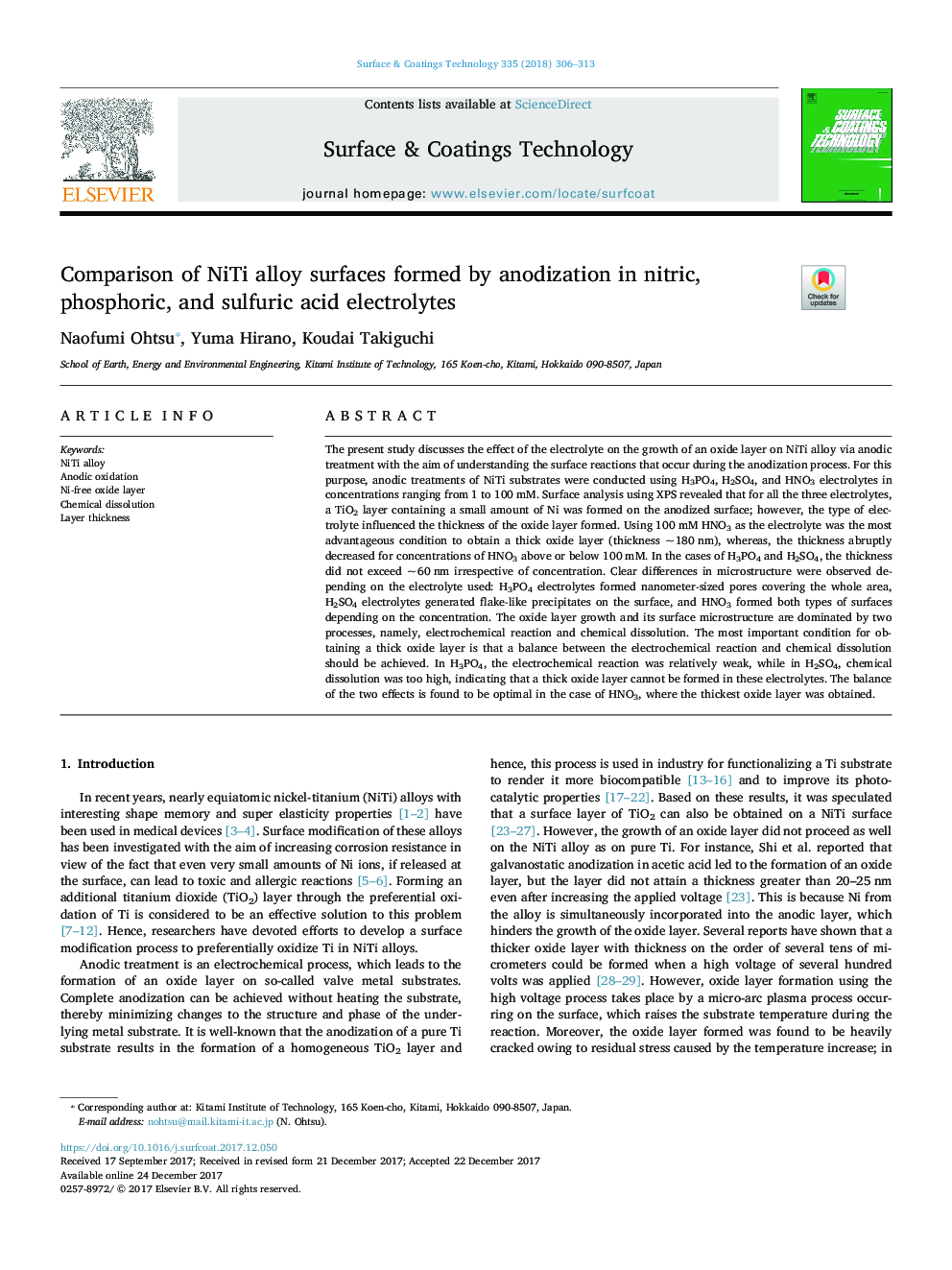| کد مقاله | کد نشریه | سال انتشار | مقاله انگلیسی | نسخه تمام متن |
|---|---|---|---|---|
| 8024453 | 1517548 | 2018 | 8 صفحه PDF | دانلود رایگان |
عنوان انگلیسی مقاله ISI
Comparison of NiTi alloy surfaces formed by anodization in nitric, phosphoric, and sulfuric acid electrolytes
دانلود مقاله + سفارش ترجمه
دانلود مقاله ISI انگلیسی
رایگان برای ایرانیان
کلمات کلیدی
موضوعات مرتبط
مهندسی و علوم پایه
مهندسی مواد
فناوری نانو (نانو تکنولوژی)
پیش نمایش صفحه اول مقاله

چکیده انگلیسی
The present study discusses the effect of the electrolyte on the growth of an oxide layer on NiTi alloy via anodic treatment with the aim of understanding the surface reactions that occur during the anodization process. For this purpose, anodic treatments of NiTi substrates were conducted using H3PO4, H2SO4, and HNO3 electrolytes in concentrations ranging from 1 to 100Â mM. Surface analysis using XPS revealed that for all the three electrolytes, a TiO2 layer containing a small amount of Ni was formed on the anodized surface; however, the type of electrolyte influenced the thickness of the oxide layer formed. Using 100Â mM HNO3 as the electrolyte was the most advantageous condition to obtain a thick oxide layer (thickness ~Â 180Â nm), whereas, the thickness abruptly decreased for concentrations of HNO3 above or below 100Â mM. In the cases of H3PO4 and H2SO4, the thickness did not exceed ~Â 60Â nm irrespective of concentration. Clear differences in microstructure were observed depending on the electrolyte used: H3PO4 electrolytes formed nanometer-sized pores covering the whole area, H2SO4 electrolytes generated flake-like precipitates on the surface, and HNO3 formed both types of surfaces depending on the concentration. The oxide layer growth and its surface microstructure are dominated by two processes, namely, electrochemical reaction and chemical dissolution. The most important condition for obtaining a thick oxide layer is that a balance between the electrochemical reaction and chemical dissolution should be achieved. In H3PO4, the electrochemical reaction was relatively weak, while in H2SO4, chemical dissolution was too high, indicating that a thick oxide layer cannot be formed in these electrolytes. The balance of the two effects is found to be optimal in the case of HNO3, where the thickest oxide layer was obtained.
ناشر
Database: Elsevier - ScienceDirect (ساینس دایرکت)
Journal: Surface and Coatings Technology - Volume 335, 15 February 2018, Pages 306-313
Journal: Surface and Coatings Technology - Volume 335, 15 February 2018, Pages 306-313
نویسندگان
Naofumi Ohtsu, Yuma Hirano, Koudai Takiguchi,